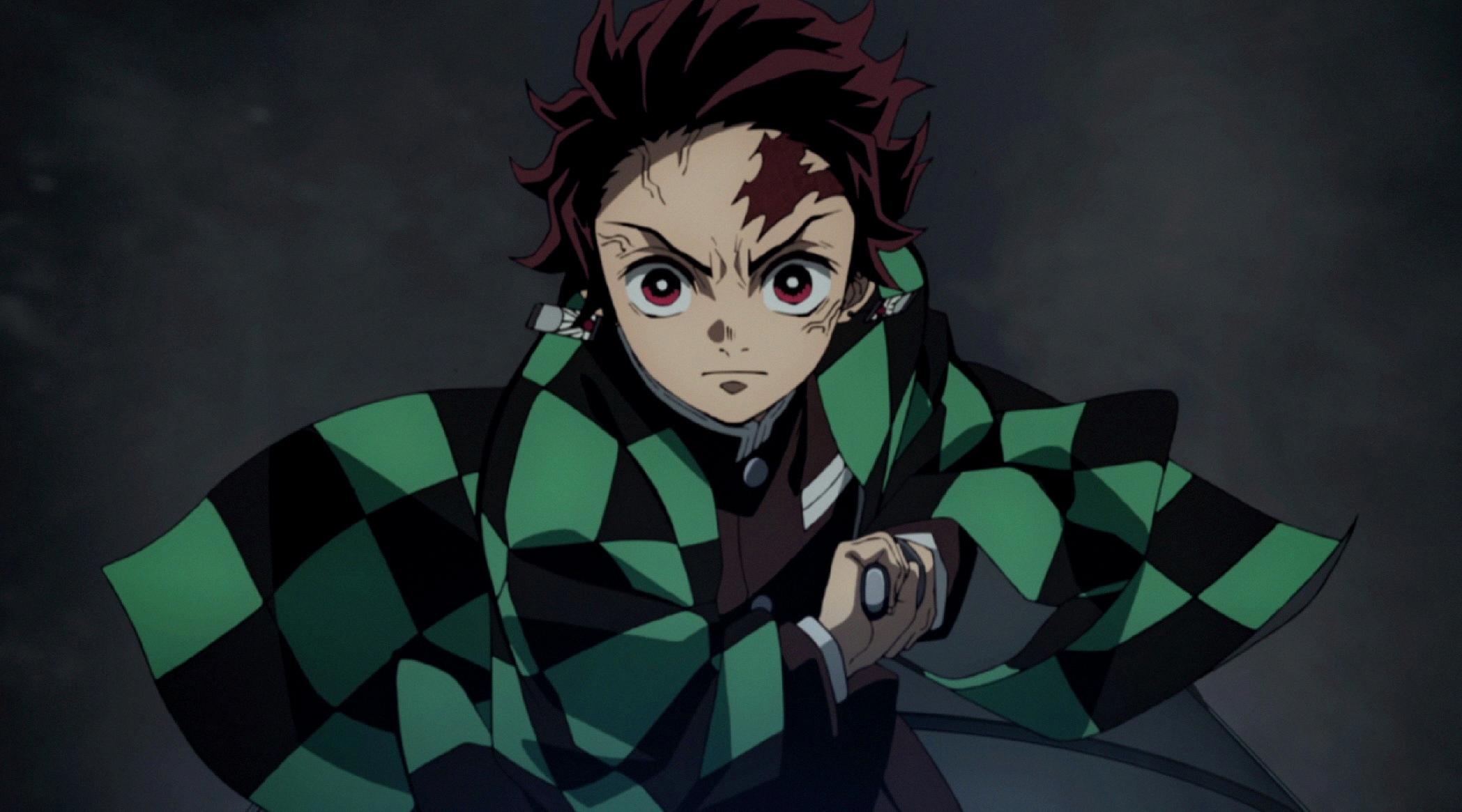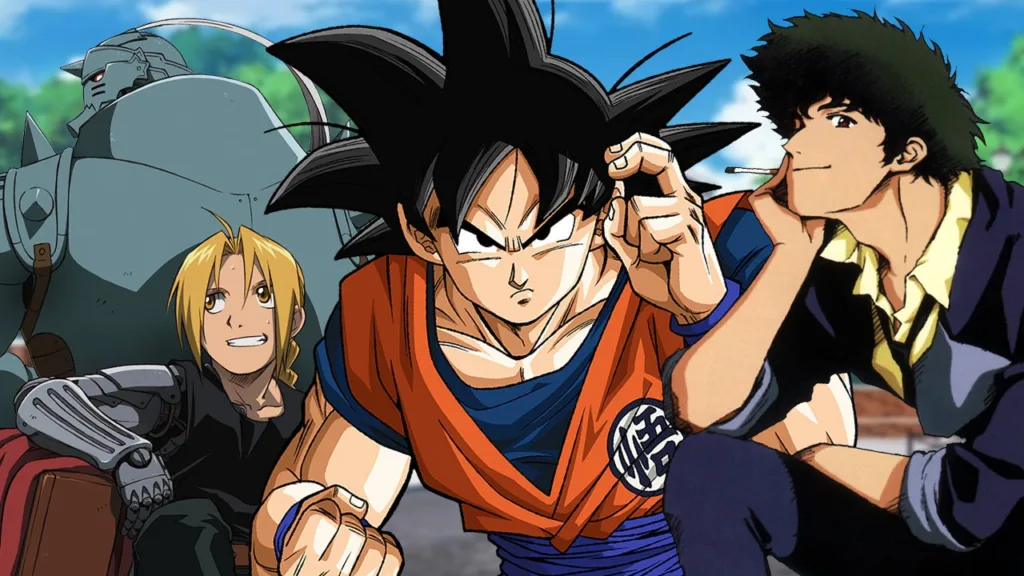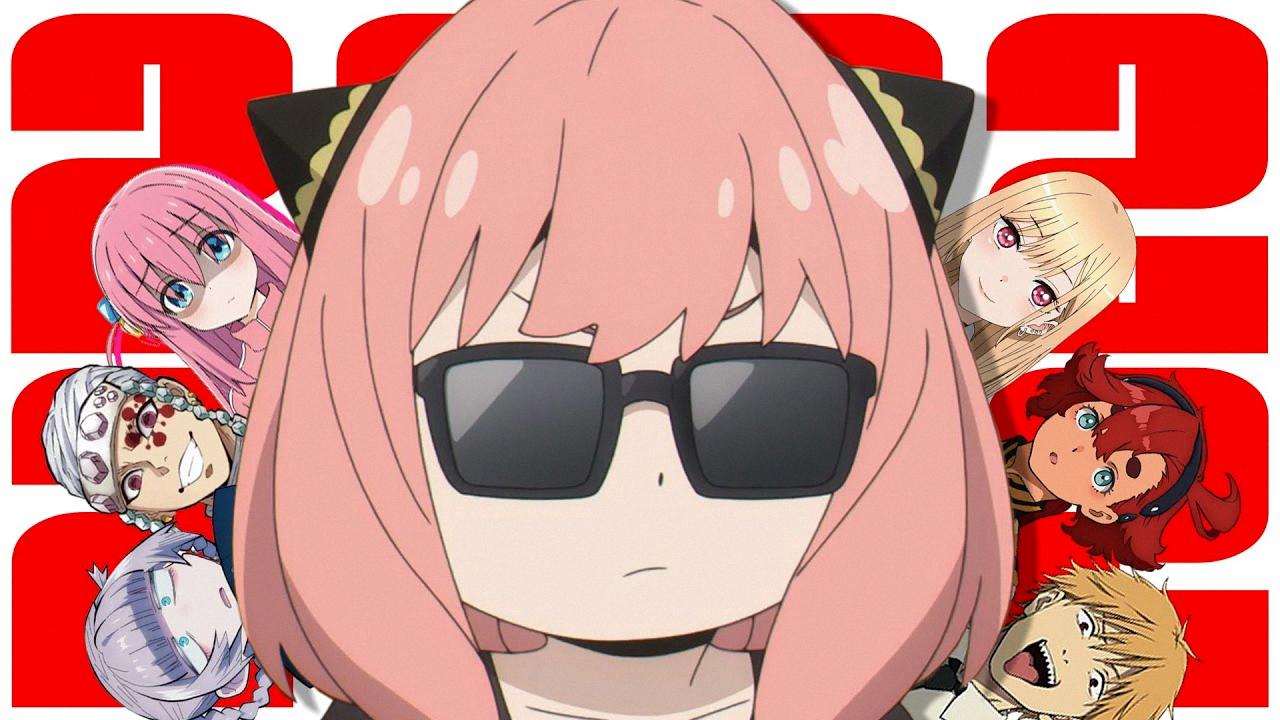Anime has become one of the most popular forms of entertainment worldwide. With its unique storytelling, animation style, and captivating characters, it has captured the hearts of millions of fans around the globe. However, the language barrier has been a significant issue for many viewers who do not understand Japanese, the language in which anime is primarily produced. This is where dubbed anime comes in.
Dubbed anime refers to an anime that has had its original Japanese voice acting replaced with voice acting in another language. This is done by recording a new vocal track and syncing it with the original animation. Dubbing can be done in various languages, such as English, Spanish, French, German, Italian, and many more.
The process of dubbing an anime series involves sveral stages. The first step is to translate the original Japanese dialogue into the desired language. This is done by a team of professional translators who ensure that the translated dialogue is accurate and maintains the essence of the original story. The translated script is then used by the voice actors to record their lines in the recording studio.
The voice actors play a crucial role in dubbing an anime series. They are responsible for bringing the characters to life and conveying their emotions and personalities through their voices. A good voice actor can make or break a dubbed anime series, as they need to match the tone, pitch, and timing of the original Japanese voice actors.
Once the voice acting is complete, the new vocal track is synced with the original animation. This is done by a team of editors who ensure that the new dialogue matches the lip movements of the characters on screen. The final product is a dubbed anime series that can be enjoyed by viewers who do not speak Japanese.
Dubbed anime has its advantages and disadvantages. One of the main advantages is that it allows a wider audience to enjoy anime without the need for subtitles. This is particularly helpful for younger viewers or those who have difficulty reading subtitles. Dubbing can also add a new dimension to the anime series by introducing a new language and culture to the viewers.
On the other hand, some viewers prefer subbed anime as they feel it is a more authentic experience. Dubbing can also alter the emotions and personalities of the characters, as some of the nuances of the original Japanese dialogue may be lost in translation. Additionally, dubbing can be expensive and time-consuming, which means that not all anime series are dubbed.
Dubbed anime is a popular way for viewers who do not speak Japanese to enjoy anime. The process of dubbing an anime series involves translating the original dialogue, voice acting, and syncing the new vocal track with the original animation. While dubbed anime has its advantages and disadvantages, it ultimately comes down to personal preference. Whether you prefer dubbed or subbed anime, what matters is that you enjoy the experience and appreciate the artistry of anime.
What Is Dubbed Anime?
When an anime is dubbed, it means that the original Japanese vocal track has been replaced with a new vocal track in a different language, usually English. This process is called dubbing, and it involves recording new dialogue that matches the lip movements and timing of the original animation. Dubbing is done to make anime more accessible to audiences who may not be fluent in Japanese or to make it easier to follow the story without having to read subtitles. Dubbing is a complex process that involves finding the rght voice actors, translating the script, and syncing the new dialogue with the animation. The quality of the dub can vary depending on the skill of the voice actors, the quality of the translation, and the care taken in the recording and editing process. Some anime fans prefer dubs because they find it easier to follow the story, while others prefer subs because they want to hear the original Japanese performance and dialogue. Ultimately, the choice of whether to watch an anime dubbed or subbed is a matter of personal preference.

Source: asia.nikkei.com
The Pros and Cons of Watching Subbed or Dubbed Anime
When it comes to deciding whether to watch an anime subbed or dubbed, it ultimately comes down to personal preference. However, thre are a few factors to consider when making this decision.
Firstly, subbed anime refers to the original Japanese audio with English subtitles, while dubbed anime features English voice actors who have recorded over the original Japanese audio. Many fans argue that subbed anime is the better option, as it allows viewers to experience the original voice acting and tone of the show. This is particularly important for anime with complex cultural references or wordplay that may not translate well into English.
On the other hand, some viewers prefer dubbed anime as it allows them to focus on the visuals and action of the show without having to constantly read subtitles. Additionally, some dubs may include changes to the script that make the dialogue more relatable to English-speaking audiences.
It’s also worth noting that some anime series may have better dubs than others, so it’s important to do some research before deciding which version to watch. Ultimately, the decision to watch subbed or dubbed anime comes down to personal preference and what works best for you as a viewer.
The Benefits of Watching Dubbed Anime
It’s important to note that there is no definitive answer to whether dubbed anime is better than subbed anime, as it ultimately comes down to personal preference. That being said, there are a few reasons why some people might prefer dubbed anime over subbed anime.
Firstly, watching dubbed anime means that viewers don’t have to constantly read subtitles, which can make the viewing experience more comfortable and less distracting. This is particularly beneficial for viewers who may struggle to keep up with the fast-paced dialogue or who may find it difficult to read quickly. Additionally, watching dubbed anime allows viewers to fully appreciate the animation and visuals without the added distraction of reading subtitles.
Another benefit of watching dubbed anime is that it allows for a more immersive viewing experience. When watching subbed anime, viewers must constantly switch their focus betwen reading subtitles and watching the action unfold on screen. This can make it difficult to fully engage with the story and characters. With dubbed anime, viewers can fully immerse themselves in the story without any distractions.
Lastly, dubbed anime allows for a wider audience to enjoy the series. Some viewers may not be able to read subtitles or may have difficulty with the language, making it difficult to fully appreciate the series. Dubbed anime allows for these viewers to enjoy the series just as much as those who can watch subbed anime.
While there are certainly benefits to watching subbed anime, there are also valid reasons why some viewers may prefer dubbed anime. Ultimately, it comes down to personal preference and what works best for each individual viewer.
Is It Acceptable to Watch Dubbed Anime?
Watching dubbed anime is absolutely okay. Dubbing is a process of replacing the original Japanese audio of an anime with a translated one in the viewer’s preferred language. Dubbed anime versions are available in a variety of languages, making it easier for non-Japanese speakers to enjoy the anime.
Moreover, dubbed anime can be a great option for people who have difficulty reading subtitles, or those who prefer to focus on the animation and visuals rather than reading subtitles. Dubbed anime is also a great option for those who want to watch anime with friends or family who may not be comfortable with subtitles.
However, it is important to note that some viewers may prefer subbed anime as it allows for a more authentic viewing experience, preserving the original voice acting and cultural nuances of the anime. Ultimately, it all comes down to personal preference and convenience. The most important thing is to enjoy the anime and apprecite the art form in whichever format suits you best.
The Benefits of Dub Over Sub
The debate about whether dubbing or subtitling is better is a matter of personal preference. Some people prefer to watch movies and TV shows in their original language with subtitles, while others prefer dubbed versions in their native tongue.
However, some argue that dubbing can be better than subtitling because it allows viewers to focus on the visuals and the story without having to constantly read the subtitles. Dubbing also allows viewers to hear the dialogue in their own language, whch can help them better understand the nuances of the story and the characters.
Additionally, dubbing can be helpful for those who are visually impaired or have difficulty reading subtitles. Dubbing allows them to fully immerse themselves in the story without having to rely on reading subtitles.
However, it’s important to note that dubbing can also come with its own set of challenges. It can be difficult to find voice actors who can accurately convey the emotion and tone of the original dialogue, and sometimes the translation can be inaccurate or lose some of the original meaning.
In the end, whether dubbing or subtitling is better ultimately depends on personal preference and the specific context in which the content is being viewed.

The Appeal of Dubbed Anime
Dubbed anime is a popular form of entertainment for many people around the world. While some fans prefer to watch anime with its original Japanese audio and subtitles, others opt for the dubbed versions. There are several reasons why people watch dubbed anime, including convenience, accessibility, and personal preference.
One reason why people prefer dubbed anime is that it allos them to focus more on the animation and the story without having to constantly read subtitles. Anime can be visually stunning, and watching it dubbed can allow fans to fully appreciate the artistry of the genre without having to divide their attention between the visuals and the text on the screen.
Another reason why people watch dubbed anime is accessibility. Not everyone has the luxury of being able to read subtitles, such as those who are visually impaired or dyslexic. Dubbed anime can be a more inclusive form of entertainment for those who may have difficulty reading subtitles.
Additionally, some fans simply prefer to watch anime in their native language. They may find the Japanese voice acting to be unfamiliar or distracting, and prefer to watch the show in a language they are more comfortable with. Dubbed anime allows fans to enjoy the show in a language they understand, making it easier for them to fully immerse themselves in the story and characters.
People watch dubbed anime for a variety of reasons, including convenience, accessibility, and personal preference. Whether it’s to appreciate the visuals, overcome language barriers, or simply enjoy the show in a language they understand, dubbed anime provides fans with a way to enjoy this popular form of entertainment in a way that works best for them.
What Is the Origin of the Term ‘Dub’?
Dubbing refers to the process of adding a new soundtrack or audio track to a video or audio recording. The term dubbing originated in the early 20th century, and it is believed to have been shortened from the word “double.” This is because in the early days of cinema, actors would often record their lines separately from the visuals, and then thee separate tracks would be combined to create the final film. This process of recording and combining multiple tracks was known as “double recording,” which later became “dubbing.” Over time, the term has come to be associated with adding a new soundtrack or voice-over to a video or audio recording, especially in a different language. Today, dubbing is an essential part of the entertainment industry and is used extensively in films, TV shows, and other media.
The Benefits of Dubbed Versions of Naruto
The answer to whether dub is better in Naruto is subjective and depends on individual preferences. However, there are some factors to consider when comparing the two versions. Firstly, the dub version of Naruto has the advantage of being in the viewer’s native language, which can make it more accessible and easier to follow. Additionally, the English voice actors in the dub version deliver strong performances that capture the essence of the characters and their emotions. Moreover, the dub version oftn includes localized references and jokes that resonate more with Western audiences.
On the other hand, some fans argue that the sub version of Naruto is better because it stays true to the original Japanese voice acting, which is considered to be of high quality. The sub version also includes nuances in language and culture that may be lost in the dub version’s localization efforts. Furthermore, the sub version is often released faster than the dub version, allowing fans to stay up to date with the latest episodes.
Ultimately, whether dub or sub is better in Naruto depends on the viewer’s personal preference. Both versions have their strengths and weaknesses, and it is up to the viewer to decide which one they enjoy more.
Which Anime Has The Best Dubbed Version?
Determining which anime has the best dub is a subjective matter that largely depends on personal preferences. However, there are some titles that are widely recognized for their exceptional English dubs. Among these, Full Metal Alchemist: Brotherhood stands out as one of the most highly regarded. Produced by Aniplex and dubbed by Funimation, the series features a talented cast of actors who bring the complex characters to life with nuance and depth. The script is faithful to the original Japanese dialogue while also being adapted to suit an English-speaking audience. The result is a dub that is both true to the source material and engaging to watch. Other notable dubs include Cowboy Bebop, Hellsing Ultimate, and Baccano, which are all praised for their high-quality voice acting and attention to detail. Ultimately, the best dub is one that resonates with the viewer and enhances their enjoyment of the anime.

Source: youtube.com
Is Dub English or Japanese?
Dub refers to the process of taking an original Japanese language anime or movie and translating it into English, with new English voice acting replacing the original Japanese voices. Therefore, dub is English and not Japanese. The process of dubbing involves matching the lip movements of the characters to their new English dialogue, and sometimes making slight edits to the animation and music to btter fit the new language. Dubbing is a common practice for anime and movies that are released in countries where the primary language is not Japanese, as it allows viewers to enjoy the content in their native language.
Does Every Anime Get Dubbed?
Not all anime get dubbed. While some anime do receive an English dub, not all licensors choose to produce one. The decision to dub an anime depends on several factors, including the popularity of the series and the target audience. Some anime may not have a large enough following in English-speaking countries to warrant a dub, while othes may be intended for a more niche audience that prefers subtitles over dubs. Additionally, producing a dub can be a costly and time-consuming process, so licensors may choose to only focus on subtitling the anime instead. Therefore, it is not a guarantee that all anime will have an English dub available.
Conclusion
Dubbed anime refers to the process of recording a new vocal track in a different language and replacing the original. While subbed anime is often preferred by purists who want to experience the show in its original language and hear the nuances of the voice acting, dubbed anime has its own appeal. It allows a wider audience to enjoy an anime series witout being required to read subtitles, making it more accessible to those who may not be fluent in the language of the original show. While translations are never perfect and dubs can change the aesthetics and direction of the show, watching subbed or dubbed anime ultimately comes down to personal preference. Both options are valid and it is up to the viewer to decide which they enjoy more.
